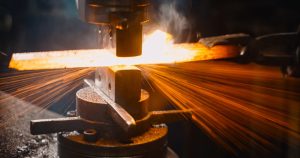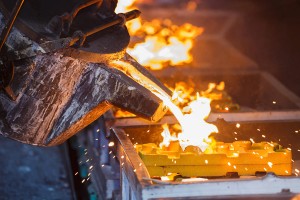Steel has shaped civilizations, built empires, and formed the backbone of modern infrastructure. From early blacksmithing to today’s towering blast furnaces, the evolution of steelmaking is a story of innovation, resilience, and human ingenuity.
Ancient Beginnings: Iron to Steel
Steel’s roots trace back over 4,000 years. Early civilizations — including the Hittites, Chinese, and Indians — discovered that heating and hammering iron with carbon-rich materials like charcoal could create a stronger, more durable metal: steel.
In India, the legendary wootz steel emerged around 300 BCE. Known for its sharpness and durability, it was used to forge the famed Damascus swords. Meanwhile, in China, steel was being produced in blast furnaces as early as the 5th century BCE, using cast iron and controlled air flow.
The Middle Ages: The Rise of Blacksmiths
During the medieval period in Europe, steel remained a highly prized material. Blacksmiths refined iron into steel using techniques like the bloomery and cementation process, though production remained limited. Steel weapons and tools were luxury items, crafted with care and often passed down through generations.
The Industrial Revolution: A Game Changer
The 18th and 19th centuries saw a steelmaking revolution. The demand for stronger materials grew with the rise of railroads, bridges, and factories.
- Henry Bessemer introduced the Bessemer process in the 1850s, which used air blasts to remove impurities from molten iron. This drastically reduced costs and increased output.
- The Siemens-Martin open-hearth process soon followed, allowing more precise control and better quality steel.
Steel became the material of choice for cities, railways, ships, and weapons. Skyscrapers rose, and the modern world took shape.
The 20th Century: Refinement and Mass Production
Throughout the 20th century, steelmaking became more efficient and environmentally controlled:
- Basic Oxygen Steelmaking (BOS) replaced open-hearth furnaces, using pure oxygen to refine pig iron.
- Electric arc furnaces (EAF) allowed steel recycling on a large scale — a vital innovation in reducing waste and energy use.
In Canada and globally, steel mills modernized. Automation and computer control systems enabled higher precision and safer operations.
Today: Toward a Greener Steel
Today’s steel industry is focused on sustainability. Electric arc furnaces now produce a significant share of global steel, especially in North America. Innovations like hydrogen-based reduction aim to eliminate carbon emissions from the process.
Steel remains essential — from buildings and cars to wind turbines and surgical tools. With ongoing research and climate goals, the future of steelmaking is being forged anew.
The Bottom Line
From charcoal and anvils to lasers and AI, the story of steel is one of relentless progress. It’s not just a material — it’s a symbol of humanity’s ability to shape the world, one innovation at a time. RDR Steel Sales offers a vast selection of steel bins.



